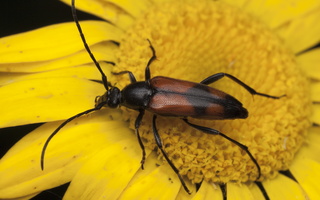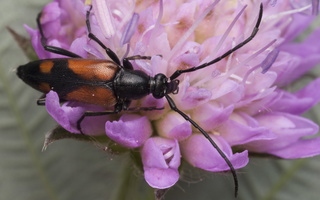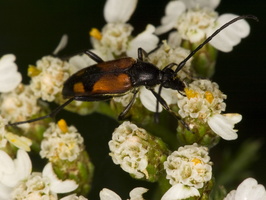- sort orderDefault
Photo title, A → Z
Photo title, Z → A
✔ Date created, new → old
Date created, old → new
Date posted, new → old
Date posted, old → new
Visits, high → low
Random - Google Map
- map
 home / Insecta · vabzdžiai / Coleoptera · vabalai / Cerambycidae · ūsuočiai / Stenurella bifasciata · dvijuostis grakštenis
home / Insecta · vabzdžiai / Coleoptera · vabalai / Cerambycidae · ūsuočiai / Stenurella bifasciata · dvijuostis grakštenis

-
 Stenurella bifasciata · dvijuostis grakštenis
Stenurella bifasciata · dvijuostis grakštenis
-
 Stenurella bifasciata · dvijuostis grakštenis
Stenurella bifasciata · dvijuostis grakštenis
-
 Stenurella bifasciata · dvijuostis grakštenis
Stenurella bifasciata · dvijuostis grakštenis
Stenurella bifasciata · dvijuostis grakštenis
- Zweibindiger Schmalbock
- Tobåndet blomsterbuk
- dvijuostis grakštenis, dvijuostė leptura
- Ruitvlek-smalboktor
- Strangalia przepasana
https://en.wikipedia.org/wiki/Stenurella_bifasciata Life cycle last 2 years. Larvae develop in dead wood of deciduous trees.
Paplitęs Europoje, Kaukaze, Turkijoje, Irane. Rastas Lietuvoje. Gyvenimo ciklas trunka 2 metus. Jų kūno ilgis siekia 6-10 mm. Lervos vystosi negyvų lapuočių medienoje. Suaugusi dvijuostė leptura skraido nuo gegužės iki rugsėjo mėn.
Subfamily: Lepturinae · grakštenėnai